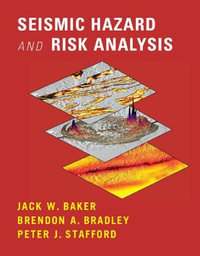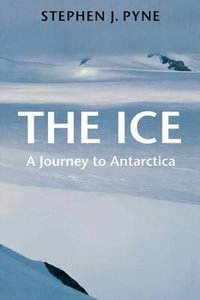| General Introduction: From the Origin of Life on Earth to Life in the Universe | p. 1 |
| The Search for Traces of Primitive Life and Other Imprints | p. 3 |
| Microfossils | p. 3 |
| Oldest Sedimentary Rocks | p. 4 |
| One-handedness of Life | p. 4 |
| Reconstructing Life in a Test Tube | p. 5 |
| Primitive Earth Atmosphere | p. 6 |
| Organic Synthesis | p. 6 |
| Delivery of Organics by Comets and Meteorites | p. 7 |
| Simulation Experiments | p. 9 |
| Recreating the Chemistry of Primitive Life | p. 10 |
| Search for Extraterrestrial Life | p. 11 |
| The Diversity of Bacterial Life as a Reference for Extraterrestrial Life | p. 11 |
| The Search for Life in the Solar System | p. 12 |
| The Search for Life Beyond the Solar System | p. 15 |
| Panspermia, Interplanetary Transfer of Life | p. 17 |
| Conclusion | p. 18 |
| References | p. 20 |
| From Prebiotic Chemistry to the Origin of Life on Earth | |
| Introduction | p. 27 |
| A Rational Approach to the Origin of Life: From Amphiphilic Molecules to Protocells. Some Plausible Solutions, and Some Real Problems | p. 29 |
| From Amphiphilic Molecules to "Protocells" by Understandable Processes. Self-Organisation and Self-Complexification | p. 29 |
| Water and Self-Organisation of Amphiphiles | p. 30 |
| The Structure of Liquid Water | p. 30 |
| The Structure of Amphiphile-water Mixtures | p. 30 |
| Properties Ensuing from the Self-organisation of Amphiphiles | p. 33 |
| Extraction and Orientation | p. 33 |
| Increased Concentration and Condensation | p. 33 |
| Vectorial Properties | p. 34 |
| Coating the Vesicles | p. 35 |
| Vesicles and Nucleic Acids; Vesicles as Protocells | p. 36 |
| The Nature of the Primitive Amphiphiles | p. 37 |
| The Modernity of N-Acyl Lipids | p. 37 |
| The Archaeal Lipids and Their Synthesis | p. 38 |
| The Terpenoids as Universal Metabolites | p. 41 |
| Some Remaining Problems | p. 41 |
| The Problem of the Synthesis of Ingredients | p. 41 |
| The Problem of Local Concentration | p. 42 |
| The Problem of the Prevalence of Phosphates | p. 42 |
| The Problem of Phosphorylation by Phosphoric Anhydrides | p. 43 |
| The Problem of the C[subscript 5] Unit | p. 44 |
| The Problem of the Cytoskeleton | p. 44 |
| References | p. 44 |
| Prebiotic Chemistry: Laboratory Experiments and Planetary Observation | p. 49 |
| Simulation Experiments and Photochemical Models | p. 50 |
| An Historical View of Miller's Experiment and the Development of a New Field: Prebiotic Chemistry | p. 50 |
| An Overview of Experimental and Theoretical Data | p. 51 |
| New Scenario for Prebiotic Chemistry | p. 53 |
| Elementary Prebiotic Chemistry in Aqueous Solution | p. 54 |
| Prebiotic Chemistry of HCN: Strecker Reaction or Oligomerization (see Box 2.1) | p. 54 |
| Prebiotic Chemistry of HCHO, Formose Reaction | p. 57 |
| Prebiotic Chemistry of Tholins | p. 58 |
| Application of These Laboratory Experimental Data to Space Studies | p. 58 |
| Telluric Planets | p. 58 |
| Giant Planets and Their Satellites | p. 60 |
| Conclusions | p. 67 |
| References | p. 68 |
| Chirality and the Origin of Homochirality | p. 73 |
| Chirality: Basic Concepts | p. 73 |
| Reactivity of Chiral Molecules | p. 78 |
| Pasteur and the Discovery of Molecular Chirality | p. 79 |
| Crystals and Crystallization | p. 81 |
| Homochirality and Life | p. 82 |
| The Why and When of Homochirality | p. 84 |
| Origin of Homochirality and Spontaneous Symmetry Breaking | p. 86 |
| Origin of Homochirality and Parity Violation | p. 89 |
| Origin of Homochirality and Photochemistry | p. 91 |
| Amplification of Enantiomeric Excesses | p. 93 |
| Introduction | p. 93 |
| Kinetic Resolution | p. 93 |
| Chiral Catalysis | p. 95 |
| Asymmetric Autocatalysis: Theoretical Models | p. 95 |
| Asymmetric Autocatalysis: Experimental Data | p. 97 |
| On the Possibility to Amplifying Enantiomeric Excesses due to Parity Violation | p. 99 |
| Exogenous Origin of Homochirality | p. 101 |
| Hypothesis and Summary | p. 104 |
| Homochirality Analyses in the Solar System and Beyond | p. 107 |
| References | p. 108 |
| Peptide Emergence, Evolution and Selection on the Primitive Earth. I. Convergent Formation of N-Carbamoyl Amino Acids Rather than Free [alpha]-Amino Acids? | p. 117 |
| Introduction | p. 117 |
| Organic Molecules on the Primitive Earth | p. 118 |
| Exogenous Amino Acids and Related Compounds | p. 119 |
| Exhaustive Survey of Exogenous Amino Acids | p. 119 |
| Formation Mechanisms of Exogenous Amino Acids | p. 120 |
| Other Meteoritic Compounds Closely Related to Amino Acids | p. 125 |
| Non-Racemic Exogenous [alpha]-Amino Acids | p. 126 |
| Exogenous Peptides | p. 127 |
| Conclusion | p. 127 |
| Endogenous Organic Matter | p. 128 |
| Endogenous [alpha]-Amino Acids | p. 128 |
| Formation Mechanisms of [alpha]-Amino Acids and N-Carbamoyl Amino Acids Via Strecker and Bucherer-Bergs reactions | p. 129 |
| The Set of Reversible Reactions | p. 132 |
| The Set of Irreversible Reactions | p. 133 |
| Fate of Primary and Secondary Amines (R[superscript 3]NH[subscript 2], R[superscript 3]R[superscript 4]NH) | p. 135 |
| Conclusion | p. 135 |
| Prebiotic Formation of [alpha]-Amino Amides and Hydantoins Through Strecker and Bucherer-Bergs Reactions | p. 136 |
| Formation of Exogenous [alpha]-Amino Amides and Hydantoins | p. 136 |
| Endogenous Formation of [alpha]-Amino Amides and Hydantoins | p. 138 |
| Convergent Evolution Towards N-Carbamoyl Amino Acids under Prebiotic Conditions | p. 140 |
| Conclusions | p. 141 |
| References | p. 142 |
| Peptide Emergence, Evolution and Selection on the Primitive Earth. II. The Primary Pump Scenario | p. 147 |
| From N-carbarmoyl Amino Acids (CAA) to Peptides | p. 147 |
| Introduction | p. 147 |
| The Primary Pump | p. 149 |
| Environmental Requirements | p. 151 |
| Primitive Earth | p. 151 |
| Primitive Atmosphere | p. 152 |
| About the pH of Primitive Oceans | p. 156 |
| Investigation of the Primary Pump | p. 157 |
| Step-By-Step Experimental Investigation | p. 158 |
| Integrated Experimental Approach: Chemoselectivity | p. 161 |
| Energy | p. 163 |
| Conclusions and Perspectives | p. 165 |
| References | p. 166 |
| The RNA World: Hypotheses, Facts and Experimental Results | p. 171 |
| The Modern RNA World | p. 171 |
| Where in the Living Cell is RNA Found? | p. 171 |
| An RNA World at the Origin of Life? | p. 177 |
| Facts | p. 178 |
| Hypotheses | p. 178 |
| But What do We Know about Primitive Replication? | p. 179 |
| A Pre-RNA World | p. 181 |
| Evolutive Usurpation | p. 181 |
| Alternative Genetic Systems | p. 181 |
| Optimizing the Functional Capacities of Ribonucleic Acids | p. 183 |
| Coenzymes and Modified Nucleosides | p. 183 |
| The Case of Adenine | p. 185 |
| Mimicking Darwinian Evolution | p. 186 |
| Other Perspectives | p. 189 |
| Conclusion | p. 190 |
| References | p. 190 |
| Looking for the Most 'Primitive' Life Forms: Pitfalls and Progresses | p. 195 |
| Simpler Doesn't Necessarily Mean Older! | p. 196 |
| Hyperthermophiles are not Primitives, but are Remnants from Thermophilic Organisms | p. 197 |
| Hyperthermophiles and the Hypothesis of a Hot Origin of Life | p. 197 |
| Hyperthermophiles are Complex Prokaryotes | p. 198 |
| Origin of Hyperthermophily | p. 200 |
| LUCA was Probably not a Hyperthermophile | p. 201 |
| Temperature and the RNA World | p. 203 |
| Comparative Genomics: a Novel Approach to Retrace Our Most Distant Past | p. 204 |
| Simple or Complex LUCA? A RNA or a DNA Genome? | p. 204 |
| A Key Step: the Apparition of DNA | p. 206 |
| Viruses: Essential Players in Evolution | p. 208 |
| The Origin of the Nucleus: a Further Puzzle | p. 209 |
| Conclusions and Perspectives | p. 211 |
| More Data are Needed | p. 211 |
| To not Forget Darwin! | p. 211 |
| References | p. 212 |
| The Universal Tree of Life: From Simple to Complex or From Complex to Simple | p. 217 |
| Principles of Tree-Reconstruction Methods | p. 217 |
| The Universal Tree of Life According to Woese | p. 221 |
| Reconstruction Artefacts | p. 224 |
| Multiple Substitutions Generate Reconstruction Problems | p. 224 |
| Mutational Saturation Versus Resolving Power | p. 225 |
| Compositional Bias | p. 228 |
| Long-branch Attraction | p. 228 |
| Heterotachy | p. 230 |
| Rare Genomic Events as an Alternative Approach? | p. 232 |
| Lateral Gene Transfer and the Quest for a Phylogeny of the Organisms | p. 235 |
| A New Evaluation of the Universal Tree of Life | p. 237 |
| The Root of the Universal Tree of Life | p. 237 |
| Prokaryotic Phylogeny | p. 240 |
| Eukaryotic Phylogeny | p. 241 |
| The Importance of an Evolution by Simplification and by Extinction | p. 243 |
| Exobiology, a Procession of Extinctions? | p. 246 |
| References | p. 247 |
| Extremophiles | p. 257 |
| Some Concepts About Extremophiles | p. 257 |
| What is an Extremophile? | p. 258 |
| Some Extremophile Features | p. 258 |
| Why Extremophiles are Interesting? | p. 259 |
| Microbial Diversity | p. 260 |
| Extreme Environments and Their Inhabitants | p. 261 |
| Extremophiles and Extremotolerants | p. 261 |
| Phylogenetic Groups Best Adapted to Extreme Conditions | p. 269 |
| Resistance Forms and Longevity | p. 270 |
| Extremophiles and Exobiology | p. 271 |
| Hyperthermophiles | p. 271 |
| Psychrophiles | p. 273 |
| Halophiles and Evaporites | p. 274 |
| The Deep Biosphere | p. 275 |
| Perspectives | p. 275 |
| References | p. 276 |
| Appendices | |
| Earth Structure and Plate Tectonics: Basic Knowledge | p. 283 |
| Earth Internal Structure | p. 283 |
| Inner Core (from 6378 to 5155 km Depth) | p. 283 |
| Outer Core (from 5155 to 2891 km Depth) | p. 284 |
| Lower Mantle (from 2891 to 670 km Depth) | p. 284 |
| Upper Mantle (from 670 km to 7 km Depth Under Oceans and 30 km Depth Under Continents) | p. 285 |
| Crusts (from 7 km Depth Under Oceans and 30 km Depth Under Continents to Surface) | p. 285 |
| Hydrosphere | p. 286 |
| Atmosphere | p. 286 |
| Lithosphere and Asthenosphere | p. 286 |
| Plate Tectonics | p. 287 |
| Plates on the Surface of the Earth | p. 287 |
| Margin Definitions | p. 287 |
| Divergent Margin | p. 288 |
| Convergent Margin | p. 291 |
| Hot Spots | p. 293 |
| Wilson Cycle | p. 294 |
| Energy for Plate Tectonics | p. 295 |
| References | p. 295 |
| Useful Astrobiological Data | p. 297 |
| Physical and Chemical Data | p. 297 |
| Astrophysical Data | p. 304 |
| Geological Data | p. 309 |
| Biochemical Data | p. 319 |
| Glossary | p. 325 |
| Authors | p. 375 |
| Index | p. 381 |
| Table of Contents provided by Ingram. All Rights Reserved. |
























